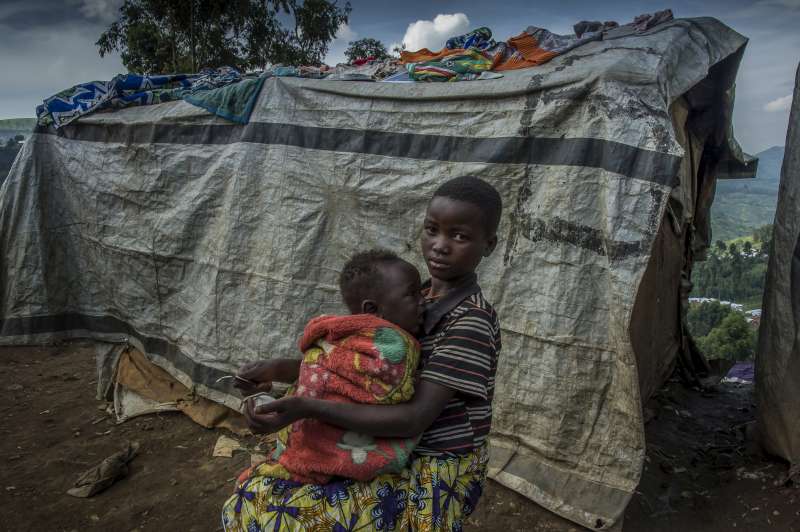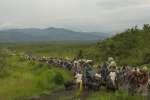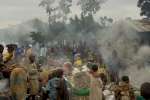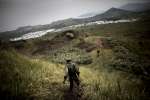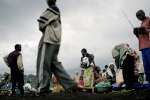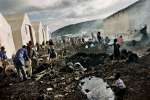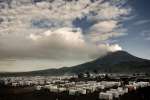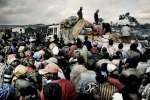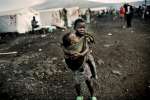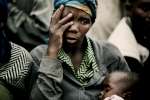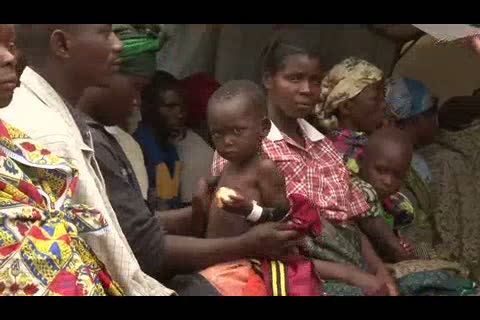Fighting in eastern DRC forces thousands to flee
News Stories, 29 January 2016
GENEVA, Jan 29 (UNHCR) – More than three years after a major rebel offensive was defeated by UN and government forces in Democratic Republic of the Congo's North Kivu province, the area remains extremely volatile and producing displacement.
Since November, waves of violence by Mai Mai militias and rebel groups including the Democratic Forces for the Liberation of Rwanda, FDLR, and the Allied Democratic Forces (ADF) of Uganda, have forced large numbers of people to flee.
This only adds to a cycle of misery in an area rich in minerals but lacking in law and order. The displacement has also come at a time when the Congolese army has been conducting military operations against the FDLR and other rebel groups.
"We believe it is urgently important for the authorities to address growing tensions in eastern DRC and scale up support to the newly displaced," UNHCR spokesperson Leo Dobbs told reporters at a briefing in Geneva on Friday (January 29).
"This includes by ensuring they can find safety either in designated sites or with the local population. We are also increasingly concerned at the targeting of civilians as the clashes intensify, particularly given decades-long tensions between ethnic groups," he added.
Since November, at least 15,000 people have sought shelter in sites for the displaced run by the UN Refugee Agency or the International Organization for Migration, IOM. On top of these displaced, tens of thousands more who fled are estimated to be living with local families while others have returned to their homes. UNHCR is calling on the authorities to ensure security in the areas of return and to facilitate humanitarian access.
In the latest major forced mass movement, more than 21,000 people – mostly women and children – fled from Miriki village and surrounding areas in North Kivu's Lubero Territory on January 7 after the killing of at least 14 people in a night raid by suspected FDLR forces.
They fled to Luofu, Kaina, Kanyabayonga and Kirumba villages in the south of Lubero Territory. A substantial number have since returned home, but some remain displaced in the area.
The FDLR has also been battling Mai Mai groups in the province's Walikale Territory. Since November, this fighting has forced tens of thousands to flee to Lubero. In early January, different estimates put the number displaced from this fighting at 70,000-82,000.
The fighting between the FDLR and militias has also forced people to seek shelter across the border in Uganda. Last year, more than 33,000 people fled to Uganda from eastern DRC.
Meanwhile the ADF continue to wage a campaign of terror and sporadic attacks and ambushes against the local population and Congolese armed forces in the north of the province.
Last month, according to our local protection partners, ADF clashes with the military left an estimated 20,000 people internally displaced in Beni Territory and raised fears of an imminent attack against the town of Beni.
A large number of these people fled to the Ituri province, neighbouring North Kivu, while the rest made their way to Beni or the district of Oicha, where they struggle to find shelter and assistance.
The UN Office for the Coordination of Humanitarian Affairs earlier this month estimated that 7.5 million people in DR Congo, or 9 per cent of the population, were in need of food and other humanitarian aid after decades of crises.
OCHA also says 1.5 million people remain forcibly displaced in the eastern provinces, including some 600,000 in North Kivu, a figure which is now likely to have risen. UNHCR supports the displaced by running 31 displacement sites, providing shelter materials, coordinating protection and advocating for their rights.




